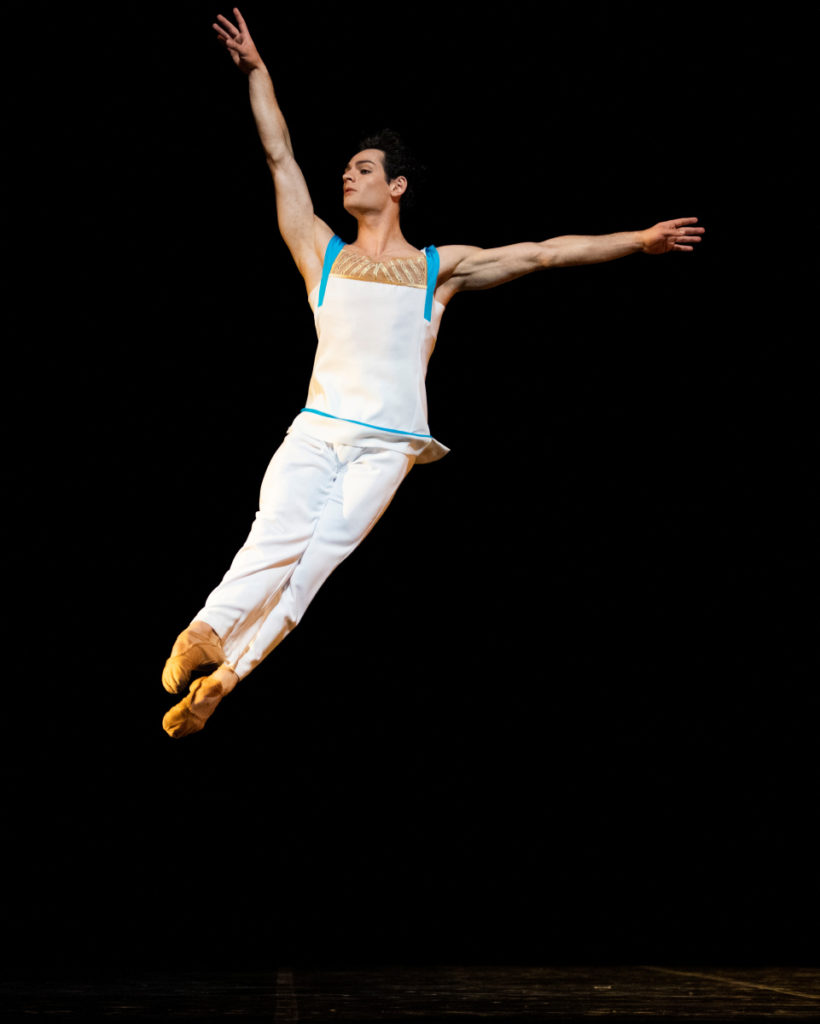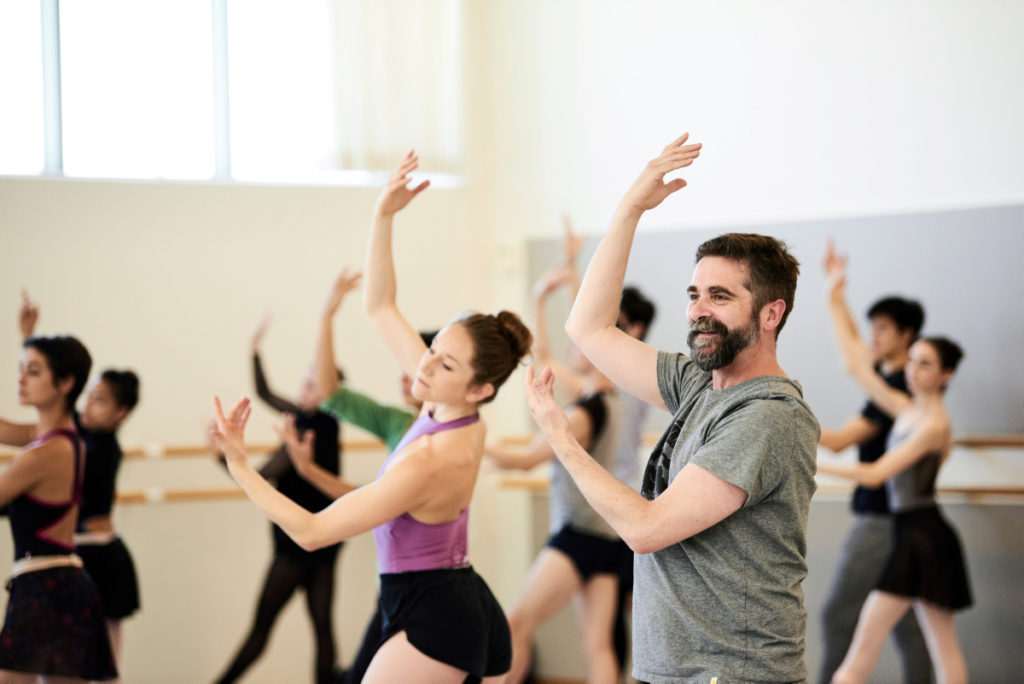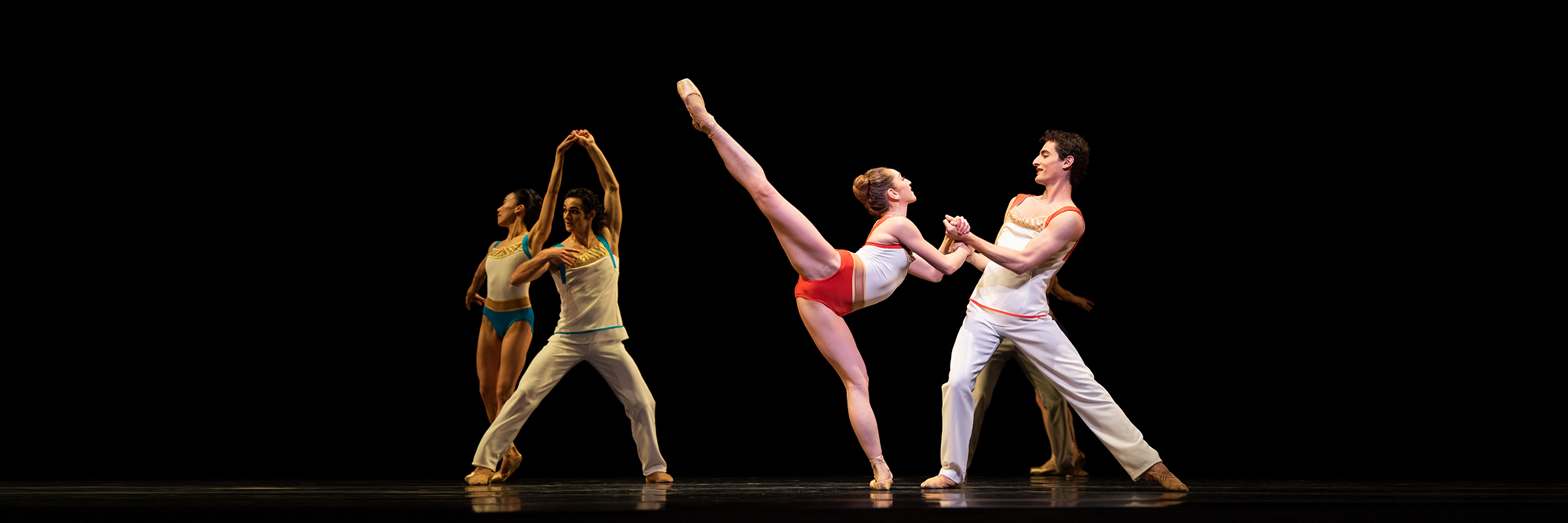About Stanton Welch’s Bespoke
A Ballet about Loving Ballet
In Stanton Welch’s Bespoke, expressions of love and gestures of caring abound. This piece, his sixth for San Francisco Ballet, is indeed about love, but it’s not about romance. Instead, Welch explores the love of dancers for their art form—the technique of ballet, the artistry, the rush of live performance. It’s an intense relationship, and one that’s all too fleeting.
That intensity, and the brevity of a dance career, occupy Welch’s thoughts quite often. “It’s a deep love dancers have with ballet,” says Welch, artistic director of Houston Ballet. “I don’t think many professions have that commitment, where you love it and when you’re around 30 to 40, it leaves you. And you know it going in, and that’s difficult.” For a long time after he retired from the stage, Welch reassured himself that he could still dance if he chose to. With the realization that those days are now behind him, he found himself wistful, longing to turn back the clock. And so clock imagery, the idea of time passing, persists throughout this ballet.
The piece begins with a solo man moving in silence. Welch hadn’t planned to start the ballet that way, but the idea came to him as he worked with Principal Dancer Angelo Greco, whom he describes as “hypnotic. He’s young and he’s fearless. He’s exactly what we should be when we first fall in love with ballet.” In the first movement, the dancers are “vital and alive,” Welch says, “with stellar technique—a truth that’s gloriously apparent in the opening moments of silence.

Along with demonstrating brilliant technique, the brief solo introduces some of the movement motifs that characterize this ballet. One is the “ticking” of straight arms, hands flattened and perpendicular to the floor; they snap into place, replicating the movement of a clock’s second hand. One dancer begins this movement, and the others join in—no one is spared the marking of time. With the ballet’s central pas de deux, quiet and poignant, the next stage begins. There’s a struggle here—the man is moving on and the woman can’t accept it. She touches him repeatedly, and each time he covers her hand with his; then she pulls her hand away and tries again. “It’s like he’s breaking, and he’s trying to convince her,” Welch says. The last movement, dominated by walking (symbolizing togetherness) and rocking motifs, is about aging dancers being left behind as class and ballet companies go on, eternal.
At times throughout the ballet, the dancers race across the stage and disappear into the wings, a device prompted in part by Welch’s memory of when he first came to the United States from Australia and was impressed by how much floor space the dancers covered. It’s a characteristic of American-style dancing, he says, and “it’s thrilling to see.”
This is all subtext, however. What’s on the surface are steps that delve deeply into the intricacies of five musical movements from two early-1700s violin concertos, the only ones by Johann Sebastian Bach that have survived their own passage of time. For Welch, illuminating the music is a big part of the joy of choreographing. “That wonderful [George] Balanchine quote about making music come alive is very much what I think we are all trying to do [as choreographers],” he says. Bach has many layers that listeners might not notice at first, and “the deeper you get into it, the richer it is.” Through movement, Welch points out melodies, rhythms, accents, undertones that delight him or reveal the music’s subtext. “Great choreographers like [Jiří] Kylián and Balanchine, those musical people, they always teach me something about music,” he says. “You go home and re-listen to it and go, “Wow, that is how that’s phrased.”

The freshness of Welch’s neoclassical movement, says Helgi Tomasson, SF Ballet’s artistic director and principal choreographer, comes from “the way the dancers move today; maybe the dancers he was working with brought that out. Time changes all of us. We are influenced by what we see, how society is.”
Step into the studio while Welch is at work and you’ll notice how often he laughs, how delighted he seems to be there. The process of creating is what he enjoys most, he says; it’s more rewarding than a premiere. “When they’re in it and you’re in it, you can go for five, six hours and not wear out, and that’s fun,” he says.

Welch calls these dancers “fantastically musical,” a trait he thinks is one of the Company’s strengths. “[Principal Dancer] Frances [Chung] is a great model of that—she could do the same step 50 times and just change it by accent, and that’s great dancing, and clever. I wanted to make that [musicality] part of the work because I think that’s San Francisco.”
Program Notes by Cheryl A. Ossola
Header image: Jennifer Stahl and Carlo Di Lanno in Welch’s Bespoke // © Erik Tomasson








